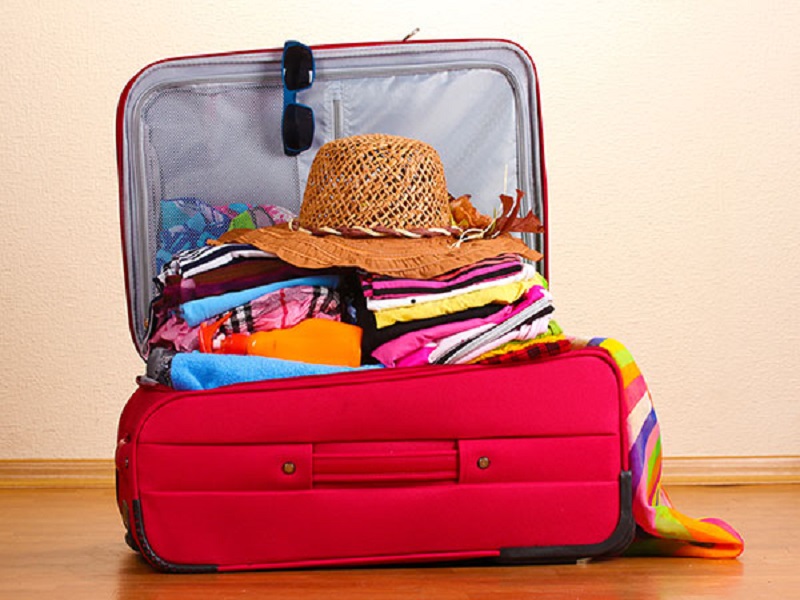via Child Development: The term “sibling” refers to children who are related and living in the same family. Sibling rivalry has occurred as long as families have existed. Think back to biblical times and Joseph’s problems with his brothers or of Disney’s “Cinderella” and the dreadful experience she had with her step-sisters!
It seems strange that whenever the word “sibling” comes up, “rivalry” seems sure to follow, despite the fact that there are many solid sibling relationships in families (brothers and sisters who genuinely like and enjoy one another). However, it’s typically rivalry that gets the most attention.
What causes sibling rivalry? Think about it. Siblings don’t choose the family they are born into, nor do they choose each other. They may be of different genders, probably of different ages and temperaments, and worst of all, they have to share the one or two people they want most for themselves: their parents. Other factors which may cause sibling rivalry include:
- Position in the family. For example, the oldest child may be burdened with responsibilities for the younger children or the younger child spends his life trying to catch up with an older sibling.
- Gender. For instance, a son may resent his sister because his father seems more gentle with her. On the other hand, a daughter may wish she could go on the fishing trip with her father and brother.
- Age. A five and an eight-year-old can play some games together but when they become ten and thirteen, they will likely have very different interests.
The most important factor, however, is a parent’s attitude. Parents have been taught that they must be impartial with their kids, but this can be extremely difficult. It’s inevitable that parents will feel differently about children who have their own personalities with varying needs, dispositions, and places in the family. Picture the age-old conflict of the young child whining: “It’s not fair. Why can’t I stay up until nine-thirty like Johnny?” Fairness has nothing to do with it. Susie is younger and needs more sleep. It’s as simple as that, and parents are advised never to give in to the old “it’s not fair” strategy. Besides, when Susie is finally allowed to stay up until nine-thirty, it will feel like a privilege to her.
Many parents feel that in order to be fair, they must treat their children equally. It’s simply not possible, and can be dehumanizing if a mother feels that when she hugs one child, she must stop and hug all of her children. Hugs will eventually become somewhat meaningless in that family. When Susie has a birthday or is ill, she is the one who merits the special attention and presents. You can be sure that no matter what they may say, the other children in the family recognize the inherent “fairness” of the situation.
Ever since we decided that sibling rivalry is a normal occurrence in a family system, we’ve had a terrible time figuring out what to do about it. Here are some do’s and don’ts that may be helpful in reducing conflicts as well as the negative effects of sibling rivalry:
- Don’t make comparisons (e.g., “I don’t understand it. When Johnny was his age, he could already tie his shoes.”). Each child feels he is unique and rightly so; he is his own person and resents being evaluated only in relation to someone else. Instead of comparison, each child in the family should be given his own goals and levels of expectation that relate only to him.
- Don’t dismiss or suppress your children’s resentment or angry feelings. Contrary to what many people think, anger is not something we should try to avoid at all costs. It’s an entirely normal part of being human, and it’s certainly normal for siblings to get angry with each other and have the impulse to physically fight. They need the adults in their lives to assure them that mothers and fathers get angry too, but have learned self-control and that angry feelings do not give license to behave in cruel and dangerous ways. This is the time to sit down, acknowledge the anger (e.g., “I know you hate David right now but you cannot hit him with a stick.”), and talk it through.
- Try to avoid situations that promote guilt in siblings. First, we must teach children that feelings and actions are not synonymous. It may be normal to want to hit the baby on the head, but parents must stop a child from doing it. The guilt that follows doing something mean is a lot worse than the guilt of merely feeling mean. In situations like this, parental intervention must be quick and decisive.
- Whenever possible, let brothers and sisters settle their own differences. While it may sound good, it can be terribly unfair in practice. Parents have to judge when it’s time to step in and mediate, especially in a contest of unequals in terms of strength and eloquence (no hitting below the belt, literally or figuratively). Some long-lasting grudges among grown siblings have resulted when their minority rights were not protected.
When One Sibling is Disabled
Quite different considerations must come into play when there is a disabled child in the family, especially if it’s a child who requires a lot of extra support both in and out of the home. In this case, non-disabled siblings can be resentful of the time spent on their brother or sister; they sense the parent’s preoccupation. They often feel they are receiving only “surface attention,” and that the parent is not really alert to their needs.
There is one critical point that should be made and emphasized in all such cases. Whatever time and effort are spent with the disabled child, it’s done with the goal of improvement: making the child better able to function independently over time. As he improves his skills, the demands on his parents will decrease commensurately, freeing them to devote more time to other members of the family. It actually boils down to, “Come on, let’s everyone help, and ultimately everyone will benefit.”
There are other measures to be taken to lessen sibling rivalry and tension in families with a disabled child. Every child deserves a certain amount of quality time with a parent. It needn’t be long but it should be undivided. Maybe a short quiet chat before bedtime, or lunch at a special restaurant. Additionally, when one of the non-disabled siblings is involved in a school or community function, the parents should make every effort to be there, no matter how much advance planning is required. Should the disabled child go, too? Take your cue from the child who is involved in the function — it’s his night. Sometimes yes. Sometimes no.
When One Sibling Is Gifted
Different people, including gifted children, have abilities and talents in different areas. Talk openly about this reality with your children so they can begin to develop appropriate expectations for themselves. You can do this by comparing your own strengths with those of your husband/wife or other family members or friends. There are two important points to be emphasized:
- Don’t expect to be great in everything.
- Recognize and develop those areas of strength you do have. Help your children make similar comparisons among themselves in the hope that they will have a greater understanding and respect for each other (e.g., “My brother gets all A’s in school but he can’t hit a baseball.”).
It’s also okay to mention your weaknesses. This can be especially effective if there is something you don’t do as well as your non-gifted child (e.g.,”I wish I could make brownies as well as yours.”).
Above all, honesty and acceptance are the greatest consideration you can give your children when the ways in which they are like and unlike one another come up in discussion.
Some Useful Sibling Conflict Resolution Strategies
Common Mistakes Parents Make in Managing Sibling Rivalry
- Taking sides, such as attempting to punish the child who is at fault, (usually the one seen pounding on the other child). How long has this child put up with the taunting of the other child before taking drastic measures?
- Ignoring appropriate behavior. Parents often ignore their children when they are playing nicely. They only pay attention when a problem arises. Behavior Mod 101 teaches that behaviors that are ignored (go unrewarded) decrease while behaviors that receive attention (are rewarded) increase.
Simple Parenting Techniques That Work
1. When the sibling rivalry progresses to excessive physical or verbal violence OR when the number of incidents of rivalry becomes excessive, take action. (Action does speak louder than words). Talk with your children about what is going on. Provide suggestions on how they can handle the situation when it occurs, such as:
- Ignoring the teasing.
- Simply agreeing (in a kidding way) that whatever the teaser is saying is true.
- Telling the teaser that enough is enough.
- When these measures aren’t working, ask the person in charge (parent, babysitter) for help.
2. When the above does not work, introduce a family plan to help with the situation that provides negative and positive consequences for all concerned, such as:
- When there is any fighting or shouting, all involved will have a consequence such as a timeout or the temporary removal of screentime.
- However, when we can go the whole day or afternoon or evening (whatever makes sense for your situation) without fighting, everyone will earn a privilege such as (1) you can have a snack, (2) I will read you a story, (3) we will all play a game together, (4) I will play outside with you (catch, etc.) or (5) you can stay up later. (Note that several of these provide parental attention for appropriate behavior).
3. Develop a system for evenly distributing coveted privileges. In other words, a system for taking turns for such things as:
- Who gets to ride “shotgun” in the car. (It’s amazing how many teenagers and young adult siblings still make this an important issue).
- Who gets to push the button in the elevator.
- Who gets to choose where to go to eat lunch or dinner.
- Who gets to chose the television show.
- Who does the dishes or takes out the trash (rotate on a weekly or monthly basis).
For more parenting techniques visit Parenting 101. For help in improving your ability to cope with the rigors of parenting, we suggest Stress Management For Parents.
Yes, siblings can create certain stresses, but if they are overcome successfully, they will give your children resources that will serve them well later in life. Siblings learn how to share, how to come face to face with jealousy, and how to accept their individual strengths and weaknesses.
Best of all, as they watch you handle sibling rivalry with equanimity and fairness, they will be gaining knowledge that will be valuable when they, too, become parents.















